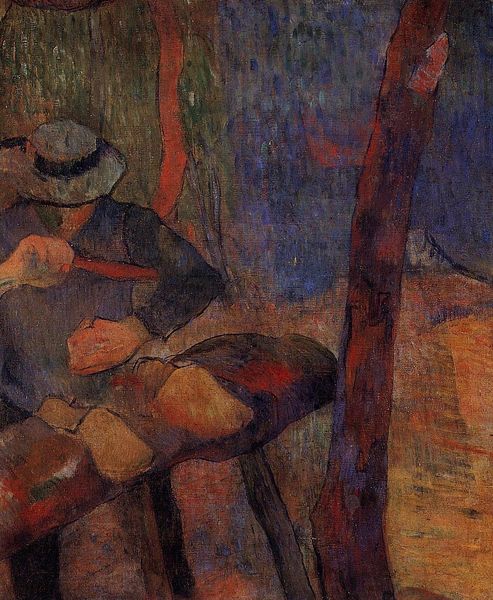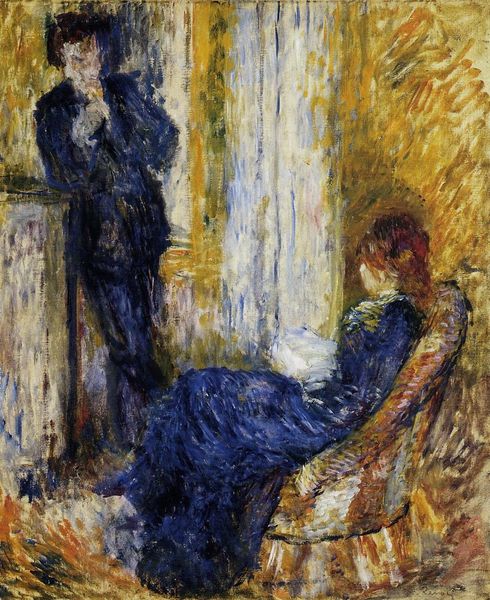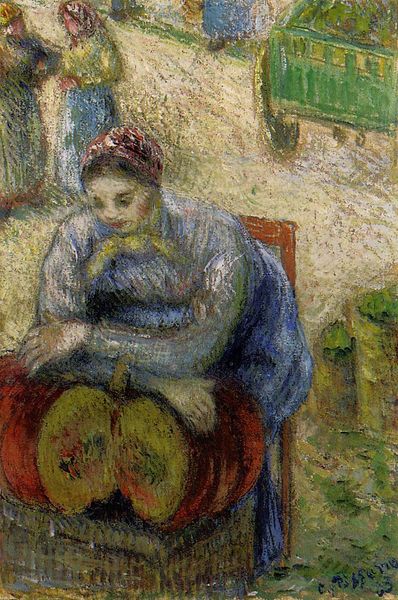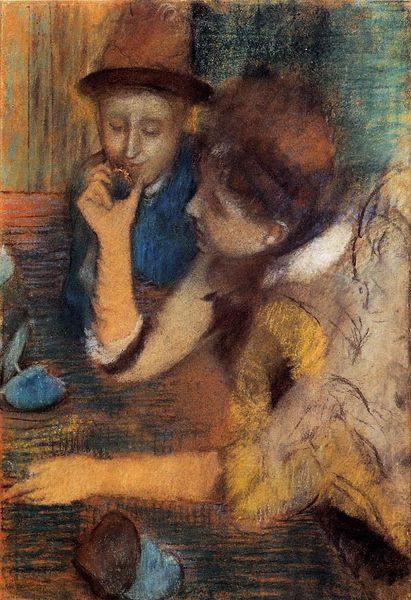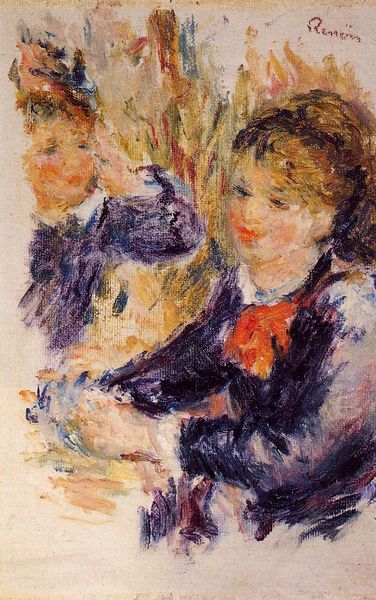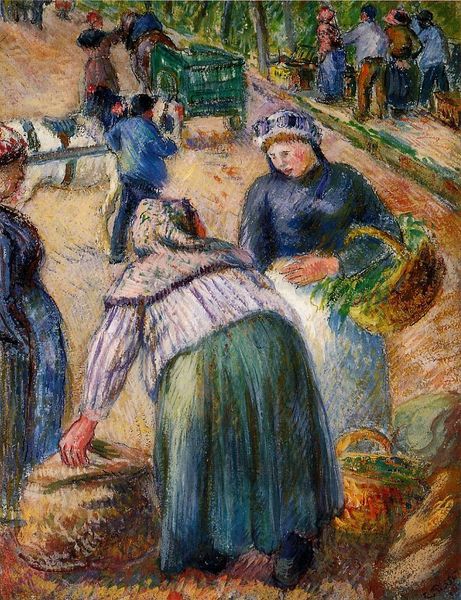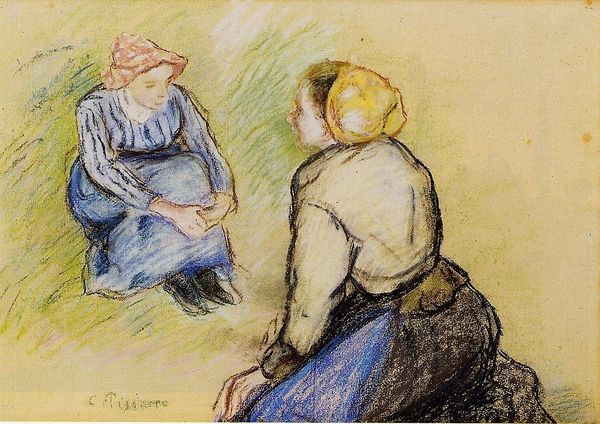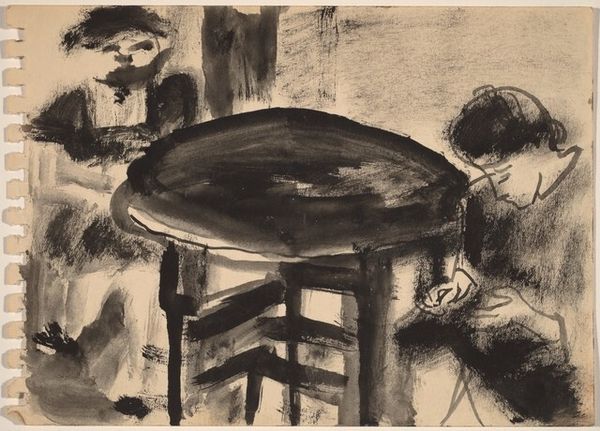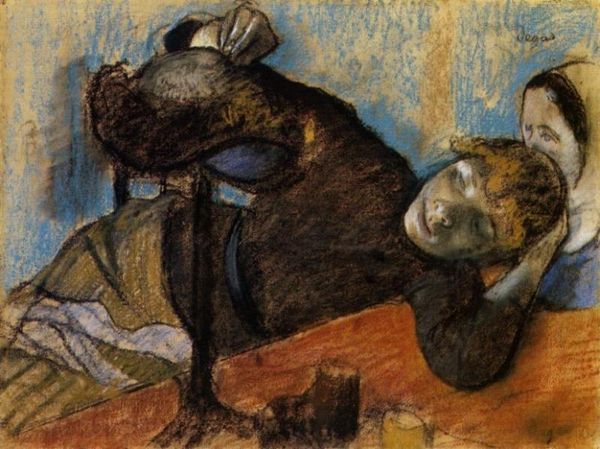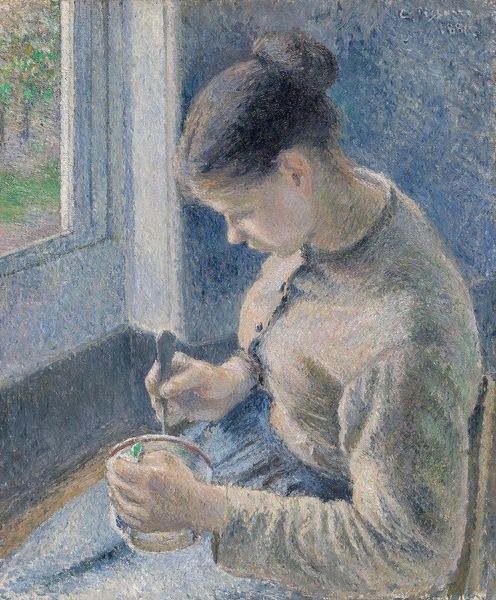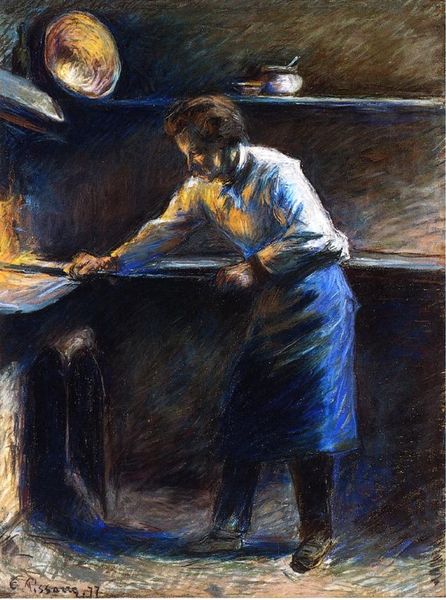
#
abstract expressionism
#
abstract painting
#
impressionist landscape
#
possibly oil pastel
#
oil painting
#
fluid art
#
acrylic on canvas
#
paint stroke
#
painting painterly
#
expressionist
Copyright: Public domain
Curator: Here we see Camille Pissarro’s "Shoemakers", painted in 1878. The artwork is held in a private collection. Editor: There's such a profound stillness to this piece. The soft pastels create a hazy, almost dreamlike atmosphere. I feel drawn into the quiet dedication of these workers. Curator: It's compelling to consider Pissarro's choice of subject matter. At this time, the art world primarily focused on depictions of the upper classes, the aristocracy and grandiose mythological scenes. Editor: Absolutely. By depicting working-class people, Pissarro challenges that elitism, centering the dignity and labor of those often marginalized or ignored by mainstream society. Look at the details in their worn hands and clothes. There's a silent commentary on social class, gender, and labor. Curator: Indeed. Impressionism, although revolutionary for its aesthetic techniques, wasn't always inherently concerned with socio-political critique. It is so powerful to see these working individuals and note the impact of labor on these people through their attire. The image appears more sympathetic than critical of society, which seems remarkable at this point in history. Editor: I see it as both sympathetic and quietly challenging. Pissarro isn't glorifying their poverty, but he's not turning away either. There is a feeling that he might even be uplifting these hard workers. And the work is more beautiful and evocative. Curator: It begs the question: what was the impact of Pissarro's commitment to showing these everyday activities when these trades became less visible as capitalism took over in that moment? Editor: The question forces me to ask if art like this, by depicting these disappearing ways of life, contributes to the collective memory, making us reflect on our rapidly changing economic landscape. Curator: Considering the legacy of this artwork, one cannot help but think about labor laws, conditions of sweat shops, the exploitation of workers and even AI. Pissarro’s painting provides insights for navigating contemporary dialogues around workers and their impact. Editor: Thinking about all that, this simple scene becomes quite radical. I think you have made me see past the surface, and recognize what might actually be going on behind the art!
Comments
No comments
Be the first to comment and join the conversation on the ultimate creative platform.
